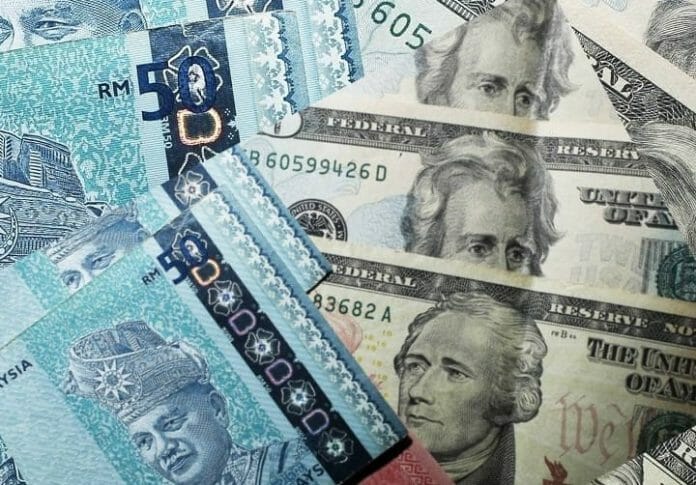The ringgit recovered to open higher against the US dollar on renewed buying interest ahead of the scheduled release of minutes from the US Federal Open Market Committee (FOMC) meeting and personal consumption expenditures (PCE) reading this week, said an analyst.
At 9 am, the ringgit rebounded to 4.4250/4335 versus the greenback from Friday’s closing of 4.4310/4345.
Meanwhile, Reuters cited that the U.S. dollar was on the front foot on Monday, supported by a strong run of economic data out of the United States that traders bet will keep the Federal Reserve on its monetary policy tightening path for longer than initially expected.
The greenback advanced broadly in early Asia trade, sending sterling 0.12 per cent lower to $1.2028 and the Aussie falling 0.18 per cent to $0.6866.
Against the Japanese yen, the dollar rose 0.14 per cent to 134.32.
Trading is likely to be thin on Monday, with U.S. markets closed for Presidents’ Day.
A slew of data out of the world’s largest economy in recent weeks pointing to a still-tight labour market, sticky inflation, robust retail sales growth and higher monthly producer prices, have raised market expectations that the U.S. central bank has more to do in taming inflation, and that interest rates would have to go higher.
“For the week ahead, the dollar can track higher given the recent run of economic data which supports the narrative of higher-for-longer interest rates,” said Carol Kong, a currency strategist at Commonwealth Bank of Australia (CBA).
Markets are now expecting the Fed funds rate to peak just under 5.3 per cent by July.
Hawkish comments from Fed officials have also underpinned the U.S. dollar, as they signalled that interest rates will need to go higher in order to successfully quash inflation.
Similarly, two European Central Bank (ECB) policymakers said on Friday that interest rates in the euro zone still have some way to rise, pushing up market pricing for the peak ECB rate.
That, however, did little to lift the euro, which was last 0.16 per cent lower at $1.0677.
“The hawkish ECB comments aren’t likely to support euro, given the dollar strength,” said Kong.
Elsewhere, the U.S. dollar index rose 0.05 per cent to 104.03, and is up nearly 2 per cent for the month so far, keeping it on track for its first monthly gain since last September.
The kiwi slipped 0.17 per cent to $0.6232, with eyes on the Reserve Bank of New Zealand’s (RBNZ) interest rate decision on Wednesday.
The RBNZ is expected to scale down its tightening campaign only slightly, with a half-point interest rate hike to 4.75 per cent.
“With inflation so high … not staying the course could mean even higher interest rates are required down the track,” said analysts at ANZ.
In Asia, focus is on China’s loan prime rate decision on Monday, with markets widely expecting its benchmark lending rates to be kept unchanged at the monthly fixing.
“We don’t think there will be any changes made,” said CBA’s Kong. “Our view has been that the (Chinese) government should announce more easing measures to aid the Chinese recovery.”
The offshore yuan was last marginally lower at 6.8783 per dollar.









